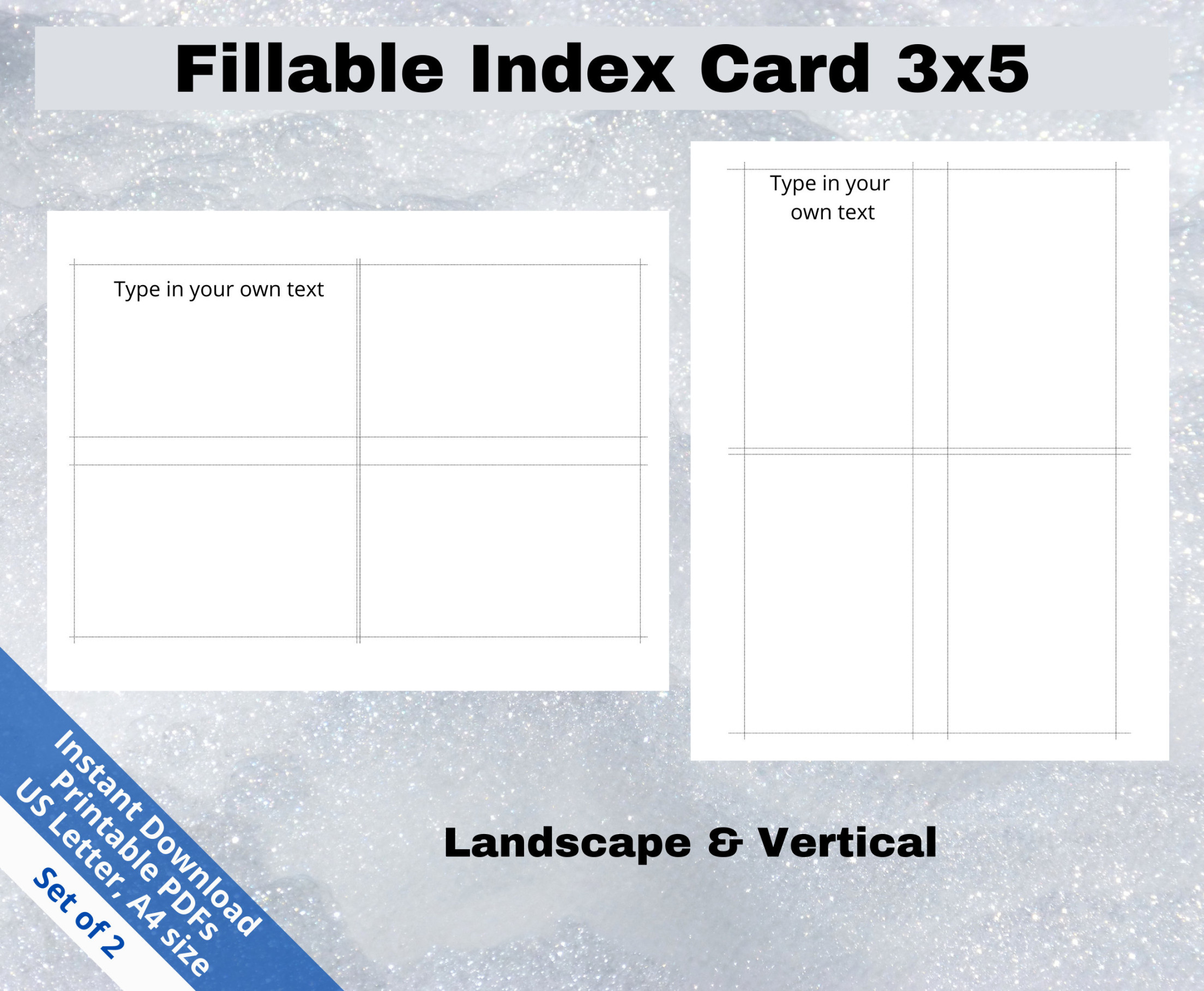A 3×5 blank index Card is a versatile tool for organizing information, taking notes, and creating flashcards. When designing a professional template for these cards, it’s essential to consider elements that convey professionalism and trust. This guide will delve into the key design considerations for crafting a 3×5 blank index card template that meets these standards.
Font Selection
The choice of font significantly impacts the overall appearance and readability of your template. Opt for fonts that are clean, legible, and easily recognizable. Serif fonts like Times New Roman or Garamond often exude a classic and professional feel, while sans-serif fonts like Arial or Helvetica offer a more contemporary and modern look.

Font Size and Spacing
Ensure that the font size is large enough to be easily read without straining the eyes. A font size between 10 and 12 points is generally suitable for 3×5 index cards. Pay attention to line spacing as well. Adequate spacing between lines improves readability and prevents the text from appearing cramped.
Layout and Margins
A well-structured layout is crucial for a professional template. Consider creating a consistent margin around the edges of the card to provide visual space and enhance readability. Experiment with different layout options, such as centering the text or aligning it to the left or right.
Header and Footer
Include a header and footer to provide additional information or branding elements. The header might contain your name, date, or subject matter. The footer could include page numbers or a copyright notice. Keep these elements concise and unobtrusive to avoid cluttering the card.
Color Scheme
Choose a color scheme that complements your brand or personal style. A monochromatic color palette, such as black and white, can create a sleek and minimalist look. If you prefer a more vibrant color scheme, ensure that the colors contrast well and are easy on the eyes.
Graphics and Images
Use graphics and images sparingly to avoid overwhelming the card. If you include visuals, ensure they are relevant to the content and enhance the overall design. High-quality images that are well-integrated into the layout can add visual interest and make the card more engaging.
Branding Elements
If you’re creating templates for professional or business use, incorporate your branding elements into the design. This could include your company logo, tagline, or color scheme. By maintaining consistency with your branding, you can strengthen your brand identity and create a professional impression.
Accessibility Considerations
When designing your templates, keep accessibility in mind. Ensure that the font size and color contrast are sufficient for individuals with visual impairments. Avoid using excessive amounts of italics or all-caps, as these can be difficult to read.
Customization Options
Consider providing customization options for your templates to cater to different preferences and needs. This might include allowing users to change the font, color scheme, or layout. By offering customization options, you can empower users to create templates that align with their specific requirements.
Template Formats
Offer your templates in various formats to ensure compatibility with different software applications. Common formats include PDF, Word, and Excel. Providing multiple options allows users to choose the format that best suits their workflow.
By carefully considering these design elements, you can create professional 3×5 blank index card templates that are visually appealing, functional, and effective for organizing information. Remember to focus on clarity, consistency, and branding to convey a professional and trustworthy impression.